
YOUR SEARCH UNCOVERED 2291 RESULTS
-
12 November – The death of Stephen Gardiner and Queen Jane Seymour’s remains are moved to Windsor

-
11 November – Philippe de Chabot landed on English soil and Queen Catherine Howard is moved to Syon House
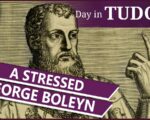
On this day in Tudor history, 11th November 1534, Philippe de Chabot, Seigneur De Brion and Admiral of France, landed on English soil. The purpose of the diplomatic mission he was leading was to renew Anglo-French relations.
George Boleyn, Lord Rochford, brother of Queen Anne Boleyn, had been put in charge of meeting the admiral and escorting him on his journey from the south coast to London, but it was no easy task. The admiral did not make things easy at all, and George was rather stressed about the situation.
Find out what happened, and how and why the ambassador’s visit was bad news all round for the Boleyns, in this talk…
[Read More...] -
9 November – The Northern Rebellion against Elizabeth I and the birth of the stillborn daughter of Catherine of Aragon
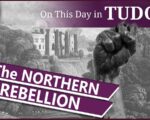
This day in Tudor history, 9th November 1569, is the traditional date given for the start of the only major armed rebellion of Elizabeth I’s reign. It’s known as The Northern Rebellion or Rising of the North or Revolt of the Northern Earls.
Northern earls Charles Neville, 6th Earl of Westmorland and Thomas Percy, 7th Earl of Northumberland, led this uprising against Elizabeth I, seeking to depose her, replace her with Mary, Queen of Scots, and restore Catholicism.
But what happened?
Find out about the 1569 Northern Rebellion and the fate of the Northern Earls in this talk…
[Read More...] -
5 November – The discovery of the Gunpowder Plot and Mary Tudor was crowned Queen of France
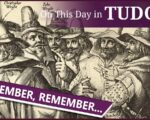
Today is the anniversary of the discovery of Gunpowder Plot conspirator, Guy Fawkes, and 36 barrels of gunpowder in a cellar beneath the Palace of Westminster on the night of 4th/5th November 1605. The plotters were planning to blow up the Houses of Parliament on the opening of Parliament and assassinate the king, his government and leading bishops and nobles.
But why and what has this event in James I’s reign got to do with Tudor history?
Well, a lot, because the Gunpowder Plot had its roots in Elizabeth I’s reign.
Find out more about the Gunpowder Plot, and those involved, in this talk…
[Read More...] -
2 November – The birth of King Edward V and the beginning of the end for Catherine Howard

On this day in history, 2nd November 1470, the feast of All Souls, King Edward V was born at Westminster Abbey, London. Young Edward was King of England for just 2 months in 1483 before he disappeared.
The events of his short life, his short reign and how it ended, are linked to the Tudors because Henry Tudor returned from exile to challenge King Richard III, who had, of course, taken the throne from Edward V.
Find out about Edward V’s life and how he came to be one of the famous Princes in the Tower, in this talk…
[Read More...] -
28 October – Ivan the Terrible writes a rude letter to Elizabeth I and the Feast of St Simon and St Jude
On this day in Tudor history, 28th October 1570, Ivan IV of Russia, known commonly as Ivan the Terrible, wrote a rather rude letter to Queen Elizabeth I.
Ivan was upset with Elizabeth’s reaction to his idea of a political alliance, an agreement to help each other if their lives were in danger, and wrote the letter while he was still angry. They were words that must have made Elizabeth see red for a while, but she managed to write a calm reply to him.
Find out exactly what Ivan the Terrible and Elizabeth I wrote to each other, and how they came to be corresponding in the first place, in this talk…
[Read More...] -
27 October – The birth of Mary Herbert and the dramatic entrance of Anne Boleyn

On this day in Tudor history, 27th October 1561, Mary Herbert (née Sidney), Countess of Pembroke, writer and literary patron, was born at Tickenhall, near Bewdley in Worcestershire. She was the sister of the poets Sir Philip Sidney and Robert Sidney, Earl of Leicester, was a writer herself and an extremely talented lady, and she also lived life to the full.
After her husband died, she had fun shooting pistols, flirting, taking tobacco and dancing. A fun lady!
Find out more about this gifted Tudor woman, who was as beautiful as she was talented, and whose work was praised, and used, by men such as Shakespeare.
[Read More...] -
November 2021 – Tudor Winters
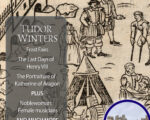
What a wonderfully interesting magazine we have for you this cold winter month. Hopefully, you’re able to stay wrapped up warm while you enjoy the latest copy of Tudor Life Magazine
[Read More...] -
25 October – Twin saints and Francis I’s gift to Anne Boleyn
Today, 25th October, is a feast day which was celebrated in medieval and Tudor times – the feast of Saints Crispin and Crispinian, martyrs of the Early Church and the patron saints of cobblers.
Find out more about these saints, how their feast day became linked to an important English victory over the French, how it was marked, and why these saints are linked to Faversham in Kent, in this talk…
[Read More...] -
24 October – John White’s return to England and the death of Jane Seymour
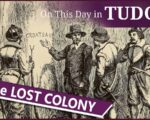
On this day in Tudor history, 24th October 1590, John White, the governor of the Roanoke Colony, returned to England after failing to find the lost colonists, which included his daughter, Ellinor (Elenora), his son-in-law, Ananias Dare, and his granddaughter, Virginia Dare.
But what happened to these colonists and what did the word CROATOAN carved onto a post mean?
Find out all about the Roanoke Colony and the theories regarding the disappearance of all 115 people, including the very latest research, in this talk…
[Read More...] -
23 October – The Dissolution of the Monasteries and John Hopkins’ burial

-
19 October – The Catholic Monarchs and the Pilgrimage of Grace
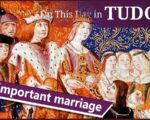
On this day in history, 19th October 1469, an event took place in Spain that was not only important in Spanish history, but which had an impact on Europe and which has links with the Tudors.
The event was the marriage of an eighteen-year-old woman called Isabella and a seventeen-year-old man called Ferdinand.
They’d become the famous Reyes Catolicos, the Catholic monarchs, Isabella I of Castile and Ferdinand II of Aragon, and would bring together two powerful kingdoms, which comprised most of what is modern-day Spain.
In this talk, I tell you more about this powerful couple, their reigns and their legacy.
[Read More...] -
15 October – A teacher is executed and a prince is christened
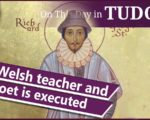
On this day in Tudor history, 15th October 1584, schoolteacher and poet Richard Gwyn (Richard White), was hanged, drawn and quartered for high treason at Wrexham in Wales due to his Catholic faith.
Find out about Richard Gwyn’s life, how an attack by crows and kites made him steadfast in his faith, his arrest and downfall, his works, and the legends associated with his death…
[Read More...] -
12 October – The birth of a king and an assassination
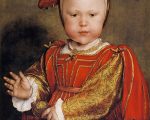
On this day in Tudor history, 12th October 1555, Lewis Owen, member of Parliament and administrator in Wales, was assassinated on Dugoed Mawddwy, a mountain pass.
Owen was murdered by a group of bandits as revenge for his campaign against them, which had led to around 80 hangings.
Find out more about Lewis Owen, his life and what happened…
[Read More...] -
9 October – Miguel de Cervantes and the wedding of Mary Tudor, Queen of France
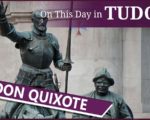
On this day in Tudor history, 9th October 1547, Miguel de Cervantes, author of the famous classic “Don Quixote”, a book known as “the first modern novel”, was baptised in Alcalá de Henares, Spain. His actual birthdate is unknown.
Now, this event didn’t happen in Tudor England, but it did happen in the Tudor period, and Cervantes is known the world over. Let me share with you some facts about this man, his rather interesting life, which including being held to ransom by pirates, and his works…
[Read More...] -
6 October – A sweating sickness expert and the execution of William Tyndale
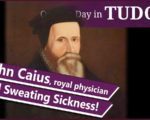
On this day in Tudor history, 6th October 1510, John Caius was born at Norwich.
Caius was a theological scholar, founder of Gonville and Caius College, Cambridge, royal physician (to Edward VI, Mary I and Elizabeth I) and author of a book on sweating sickness.
In this video, I give an overview of John Caius’ life and career, as well as sharing some of what he wrote on sweating sickness, that mystery Tudor illness.
[Read More...] -
5 October – Edward Seymour unravels and two-year-old Princess Mary becomes betrothed
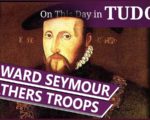
On this day in Tudor history, 5th October 1549, Edward Seymour, Duke of Somerset and Lord Protector, ordered a gathering of men at Hampton Court Palace, where he was lodged with the young King Edward VI, due to tensions mounting between Somerset and John Dudley, Earl of Warwick.
What was going on and what happened when 4,000 peasants turned up? How did John Dudley react and what did King Edward VI have to say about it all?
Find out what happened, and how this led to Somerset’s undoing…
[Read More...] -
4 October – A rebel and a rebellion
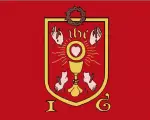
On this day in Tudor history, 4th October 1507, Sir Francis Bigod, was born at Seaton, in Hinderwell, Yorkshire.
Bigod led an uprising in Yorkshire in January 1537, Bigod’s Rebellion, after the rebels of the Pilgrimage of Grace had been dispersed. But who was Bigod? Why would an evangelical reformer become involved with the Pilgrimage of Grace? What was his rebellion about and what happened to him?
Find out more about Sir Francis Bigod and Bigod’s Rebellion…
[Read More...] -
28 September – Robert Devereux sees Elizabeth I without her mask of youth and Mary I travels to the Tower
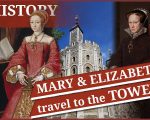
On this day in Tudor history, 28th September 1599, Elizabeth I’s favourite, Robert Devereux, 2nd Earl of Essex, strode into the queen’s bedchamber unannounced and saw her without her makeup or wig, without her “mask of youth”.
Why would he do such a thing?
Find out why Devereux was troubled and wanted to see the queen urgently and how Elizabeth I reacted to his visit, and what happened next…
[Read More...] -
23 September – A work about two star-crossed lovers and a Tudor bishop

On this day in history, 23rd September 1605, in the reign of King James I, Tudor pamphleteer William Averell was buried at St Peter upon Cornhill.
Averell’s first work was about two Welsh star-crossed lovers, Charles and Julia, and he also wrote a Protestant work about it raining wheat in Suffolk and Essex, an event which he saw as presaging the end of the world.
Averell was an interesting character and you can find out more about him and his work in this video…
[Read More...] -
22 September – Amy Robsart and Anne of Cleves
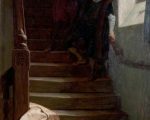
On this day in Tudor history, 22nd September 1560, Amy Dudley (née Robsart), wife of Robert Dudley, Earl of Leicester, was buried in the chancel of the University Church of St Mary the Virgin, Oxford.
Amy had been found dead at the foot of the stairs of her home and the subsequent inquest had ruled her death as caused by “misfortune”. She was buried in a lavish ceremony which cost her widower over £2,000.
Find out more about her burial, and who attended…
[Read More...] -
Did Catherine of Aragon and Arthur Tudor consummate their marriage?
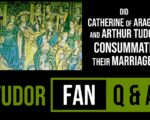
Catherine of Aragon and Arthur Tudor, Prince of Wales, were married from 14th November 1501 until Arthur’s death on 2nd April 1502, but did they consummate their marriage? They certainly slept in the same bed, but did Catherine of Aragon and Arthur Tudor have sex?
Find out what people said at the Legatine court hearing in 1529 and the Zaragoza hearing in 1531, and what Catherine claimed, in this talk…
[Read More...] -
14 September – A Constable of the Tower and a destroyed shrine
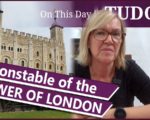
-
13 September – A Tudor poet and Elizabeth I’s “spirit”
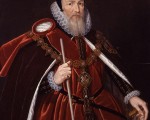
-
10 September – A battle and Elizabeth I’s christening

n this day in Tudor history, Saturday 10th September 1547, in the reign of King Edward VI, the Battle of Pinkie Cleugh, also known as the Battle of Pinkie, took place near Musselburgh, in Scotland, on the banks of the River Esk. The English forces, led by Edward Seymour, Duke of Somerset, defeated the Scots, killing thousands.
It was a bloody battle, but started off well for the Scots. In this video, I share an eye-witness account of how the battle changed so dramatically, leading to the loss of between 6,000 and 15,000 Scots.
[Read More...] -
9 September – Mary, Queen of Scots is crowned and the Battle of Flodden
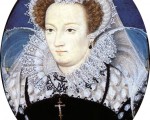
-
7 September – Charles Brandon marries his young ward, and Elizabeth I is born
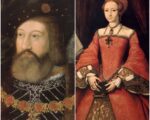
On this day in Tudor history, 7th September 1533, just over two months after the death of his previous wife, Mary Tudor. Queen of France, forty-nine-year-old Charles Brandon, Duke of Suffolk, married his ward, fourteen-year-old Catherine Willoughby.
Find out more about this Tudor couple, how they came to be married, what their marriage was like, and what happened to them…
[Read More...] -
1 September – Actor Edward Alleyn and Anne Boleyn becomes Marquess of Pembroke
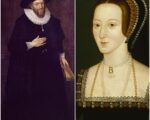
On this day in Tudor history, 1st September 1566, Edward Alleyn, a major figure in the Elizabethan theatre, was born in the parish of St Botolph without Bishopsgate, London, and baptised the following day.
In this video, I share some facts about Edward Alleyn, including his personal life, the plays he was involved in, his theatre investments, and his desire to be appointed master of the bears, bulls and mastiff dogs!
[Read More...] -
29 August – St John the Baptist and Geoffrey Pole

Today, 29th August, is the Feast of the beheading of St John the Baptist. Lovely!
In this video, I share the story behind this Tudor holy day, a story which is often depicted in illuminations in manuscripts and psalters.
[Read More...] -
26 August – A devastated Mary I and Anne Boleyn prepares to give birth
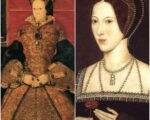
On this day in Tudor history, 26th August 1555, Queen Mary I and her husband, Philip of Spain, departed from Whitehall in preparation for Philip’s return to the Low Countries.
This was an awful time for Mary I. She had just come out of confinement after months of believing she was pregnant, and now her husband was leaving her. He’d be gone for over 18 months.
Find out more about Mary’s state of health and mind, the arrangements for Philip’s departure, and Mary’s reaction…
[Read More...]
